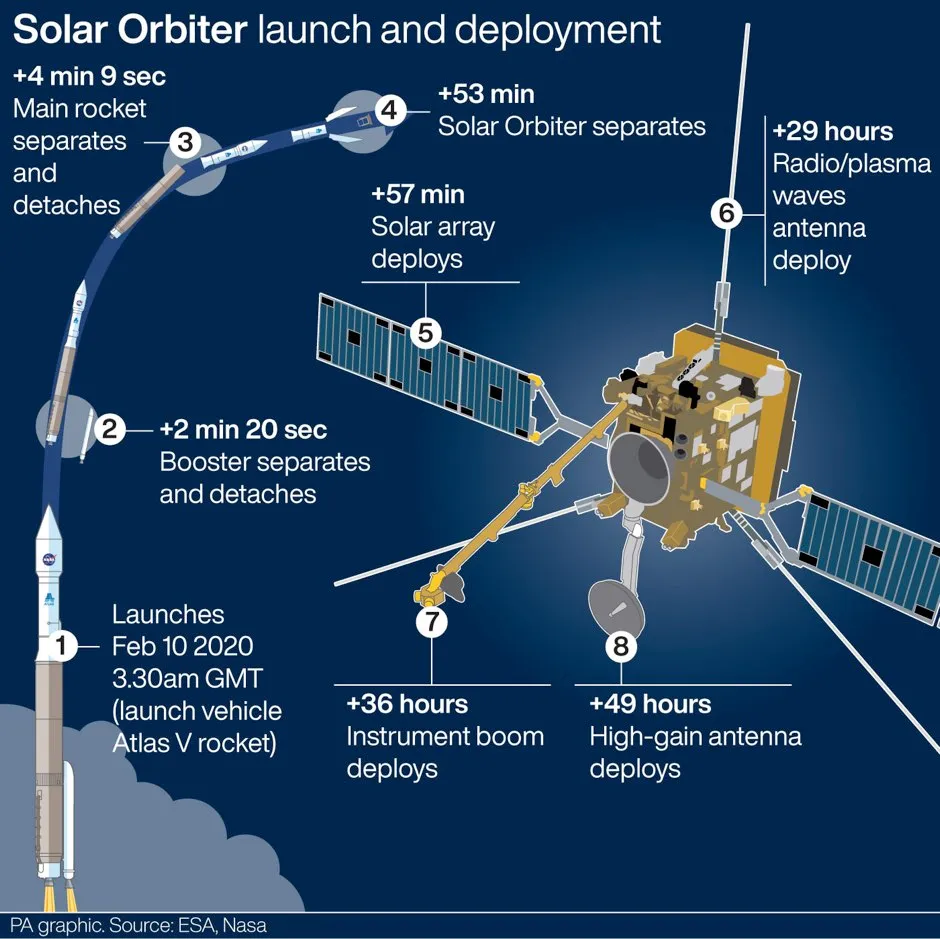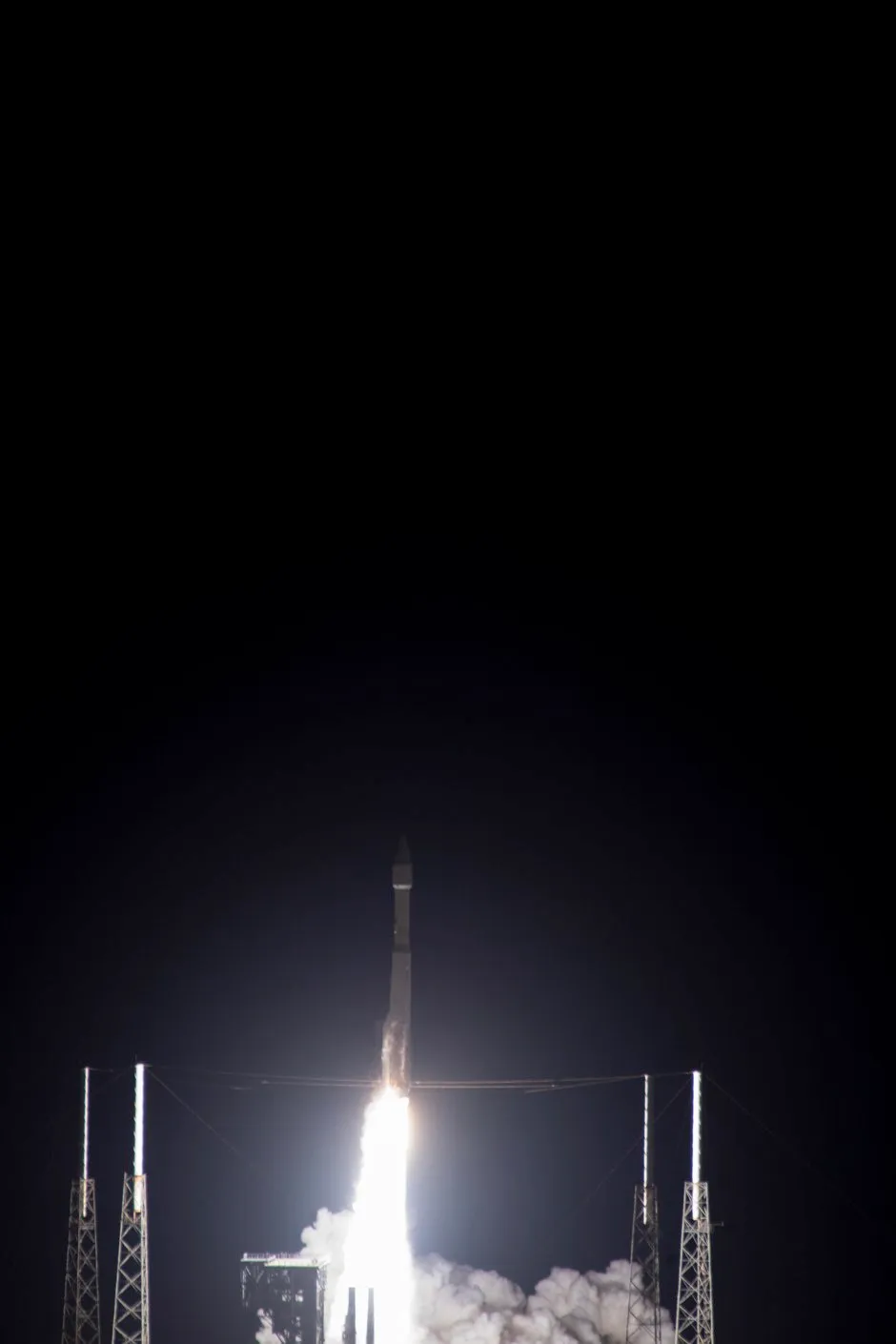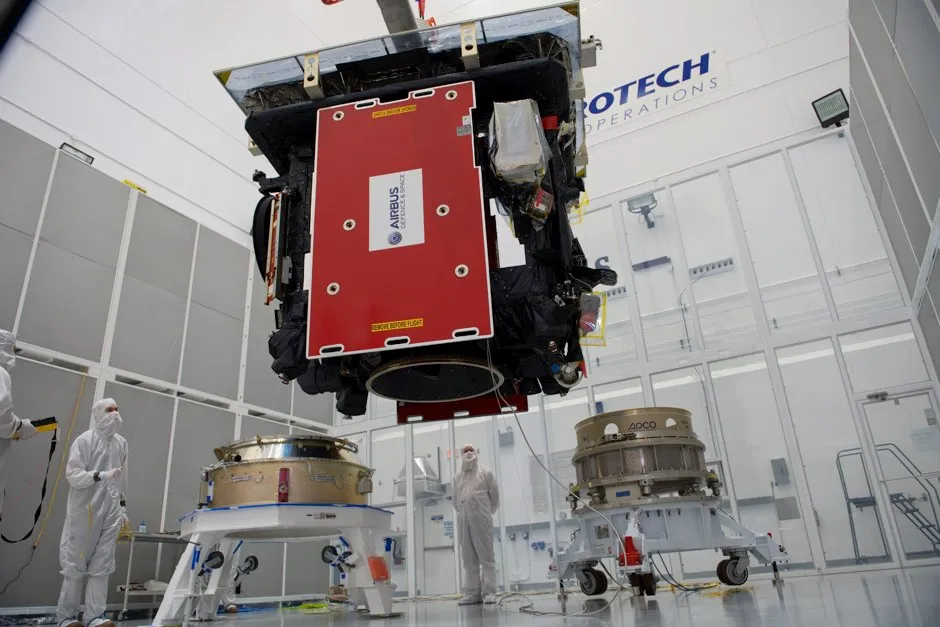The Solar Orbiter – which aims to unlock the secrets of the Sun – is on its way to the star.
Built by Airbus in Stevenage, it lifted off into space in the Atlas V 411 rocket from Nasa’s Cape Canaveral site in Florida just after 04:00 GMT.
Read more about the Sun:
- How the Parker Solar Probe will 'touch the Sun'
- Crystals trapped in meteorites reveal the Sun’s violent past
There were hugs of congratulations and relief at the European Space Agency’s (ESA) European Space Operations Centre at the successful launch. Meanwhile in Florida, Günther Hasinger, ESA’s director of science, and Thomas Zurbuchen, NASA’s associate administrator for the science mission directorate, gave a thumbs up, declaring: “We have a mission.”
Signals from the spacecraft were received at New Norcia Station ground station at 05:00, following separation from the launcher upper stage in low Earth orbit.
Prof Hasinger said: “As humans, we have always been familiar with the importance of the Sun to life on Earth, observing it and investigating how it works in detail, but we have also long known it has the potential to disrupt everyday life should we be in the firing line of a powerful solar storm.”
Cesar Garcia Marirrodriga, ESA’s Solar Orbiter project manager, added: “After some 20 years since inception, six years of construction, and more than a year of testing, together with our industrial partners we have established new high-temperature technologies and completed the challenge of building a spacecraft that is ready to face the Sun and study it up close.”

The satellite will orbit the star, beaming back high-resolution photos and measuring the solar wind as part of the mission led by the European Space Agency (ESA) and partly funded by the the UK Space Agency. It will take about two years to reach the Sun, which scientists call the “cruising phase”.
The satellite has 10 in-situ and remote-sensing instruments to take photographs and measure solar wind plasma, fields, waves and energetic particles very close to the Sun.
Read more about ESA missions:
- CHEOPS: ESA satellite mission to help us understand exoplanets launches
- Race to Venus: What we'll discover on Earth's toxic twin
It will make a close approach to the Sun every five months, and at its closest will only be 42 million km away – closer than the planet Mercury. During these times, it will be positioned for several days over roughly the same region of the Sun’s surface, as the Sun rotates on its axis.
This will allow the orbiter to observe magnetic activity building up in the atmosphere that can lead to powerful flares and eruptions, providing new insights into the giant storms raging on its surface.

Chris Lee, the UK Space Agency’s chief scientist told PA: “The biggest storms have the potential to overwhelm our magnetic field and this can lead to disruption of electrical equipment, both in space, with satellites and on the ground, with our energy grids.” Predicting when these storms occur could help governments and companies protect these satellites and other communications infrastructure.
Solar Orbiter will have to endure temperatures of more than 500°C – hot enough to melt lead.Its heat shield, with a coating called SolarBlack, will continually face the Sun in order to protect the sensitive instruments behind it.
What role did the UK play?
Scientists in the UK helped design four of the 10 instruments on the Solar Orbiter, while the UK Space agency provided £20 million of funding for the £1.3 billion project.
The design and implementation of the spacecraft was undertaken by aerospace company Airbus in Stevenage.

Dr Lee said: “Understanding how our Sun works is a UK science strength, with teams investigating how solar storms build and grow.
“Solar Orbiter is the most important UK space science mission for a generation, both because of its leading roles for UK science and industry but also because of the crucial information it will give us about living near a star like the Sun.
“Science teams across the UK proposed the mission in the first place and are now supporting major roles in four of the 10 instruments.”
What will happen to the Solar Orbiter at the end of the mission?
The mission is expected to last 11 years. Once the Solar Orbiter runs out of fuel and power, scientists will lose all communication with the spacecraft.
It will then continue to orbit around the Sun somewhere between Mercury and Venus as a piece of space junk.
Reader Q&A: Does the Sun make a sound?
Asked by: Simon Price, Aberdeen
The Sun does indeed generate sound, in the form of pressure waves. These are produced by huge pockets of hot gas that rise from deep within the Sun, travelling at hundreds of thousands of miles per hour to eventually break through the solar surface. As a result, the Sun’s atmosphere is seething like a pan of boiling water.
The characteristics of sound waves, such as their speed and amplitude, depend on the material they pass through, so they can be used to study the Sun’s deep interior. Unfortunately, though, the wavelength of these waves is measured in hundreds of miles, and so they’re far outside the range of human hearing.
Read more:
